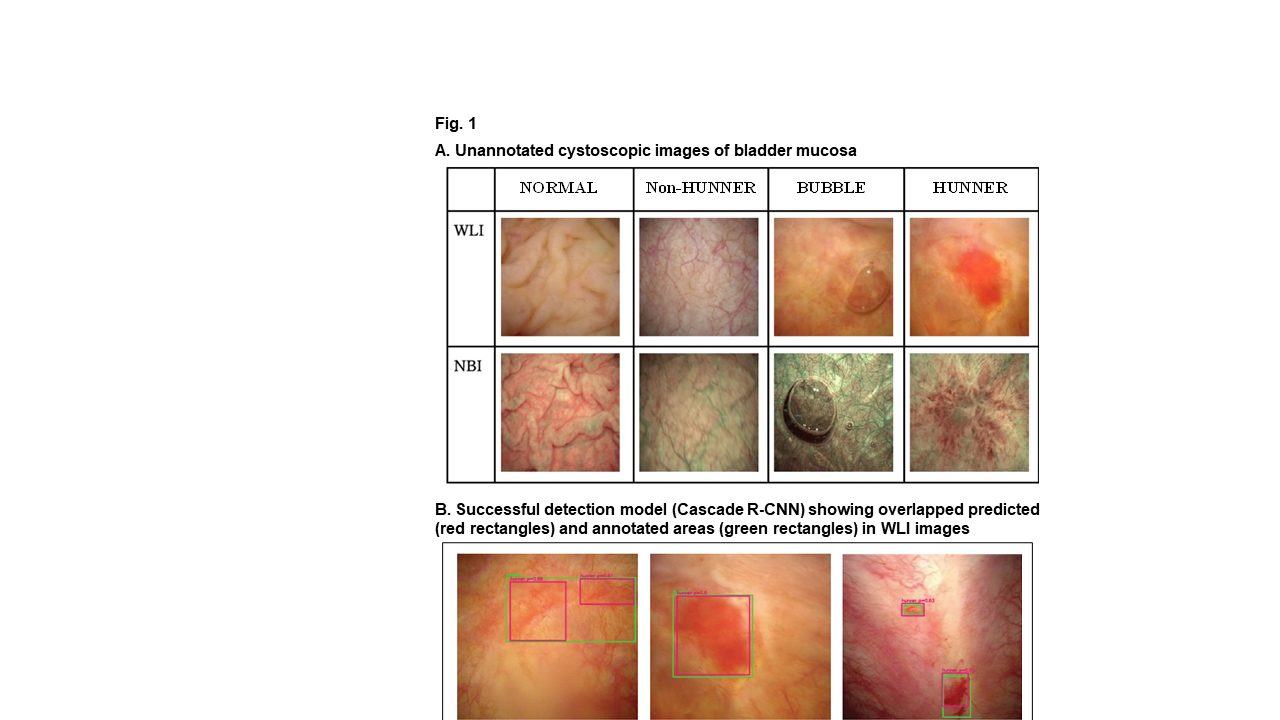Podium
PD08: Infections/Inflammation/Cystic Disease of the Genitourinary Tract: Interstitial Cystitis
-
TU
Podium Presenter(s)
Introduction: In IC/BPS patients, Hunner lesion (HL) IC exhibits profound submucosal inflammation and epithelial denudation in the bladder, which are pathologically distinct from non-Hunner BPS. However, the detection rate of HL in IC/BPS patients greatly varies among institutions, in the range of 5-57%, possibly due to differences in patient populations among institutions, diagnostic criteria of HL, or diagnostic skills among urologic professionals. Also, while the typical HL can readily be detected, small or atypical HL may be missed during cystoscopic observation. Thus, we aimed to develop the machine-learning algorithm, AINAFHIC (AI Navi For Hunner and IC), to detect HL using large-scale, unannotated video-based cystoscopic images obtained under conventional white light imaging (WLI) or narrow-band imaging (NBI).
Methods: We utilized retrospectively collected videos acquired during cystoscopy from 103 IC/BPS patients with or without HL during 2016-2020 in our institution. Individual frames were extracted from the videos resulting in 2238 WLI and 3992 NBI images, which were annotated by selecting lesion areas. Network models were trained separately on WLI and NBI images to detect HL, non-HL as well as air bubbles (Fig. 1A). The acquired models were used to develop an evaluation system of captured videos for detecting bladder pathologies with high efficiency.
Results: Performance of convolutional neural networks (CNN) was compared experimentally. Cascade R-CNN model was used for detection and Cascade Mask R-CNN, OCNET, produced segmentation masks as output. HL were well predicted as shown in bounding boxes by both detection and segmentation methods (Fig. 1B). The successful lesion recognition was the highest with Cascade Mask R-CNN. For the WLI the rate of correctly found lesions was above 90%, while for NBI it was 67%, possibly due to the mode of image capturing.
Conclusions: By using machine-based, deep-learning algorithm, we can successfully classify Normal vs. Pathology in the bladder mucosa during cystoscopic evaluation with both WLI & NBI to detect HL in IC/BPS patients. This new AINAFHIC evaluation system will increase the accuracy of cystoscopic detection of HL, which allows the tailored treatment of Hunner type IC/BPS patients.
Source of Funding: None

.jpg)
.jpg)